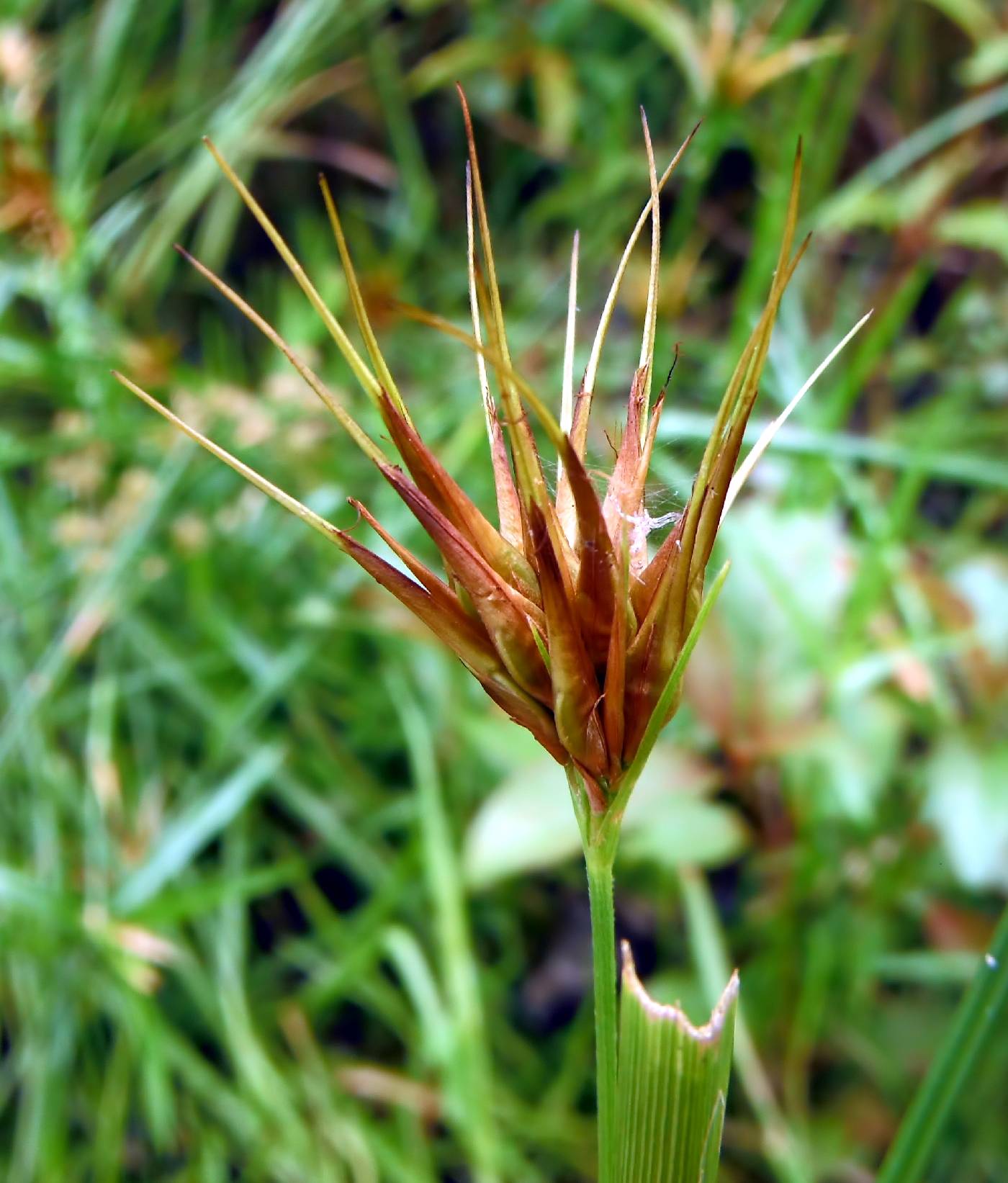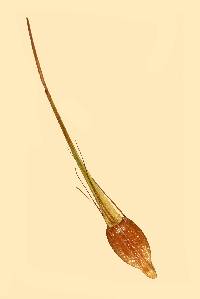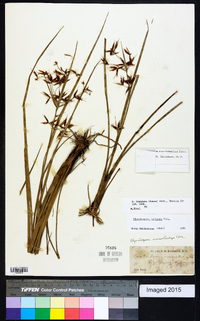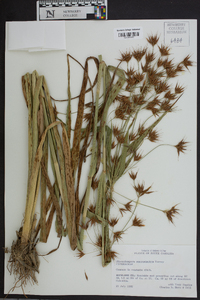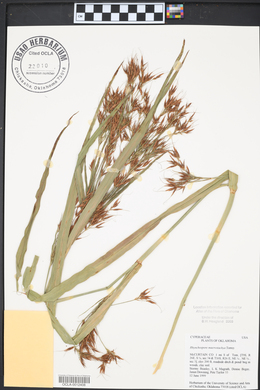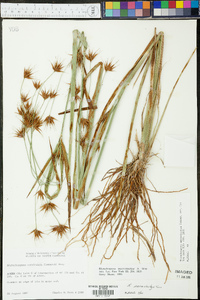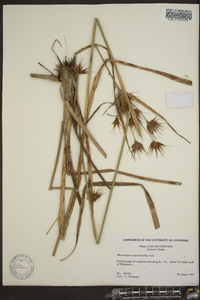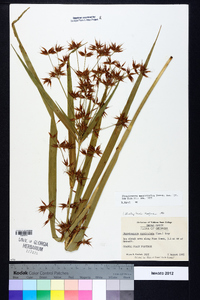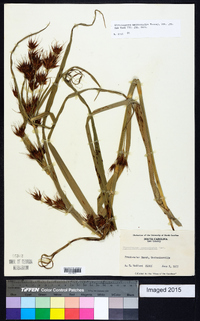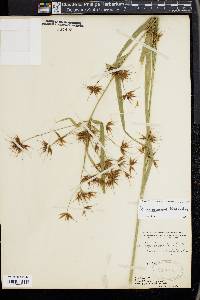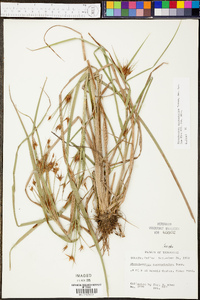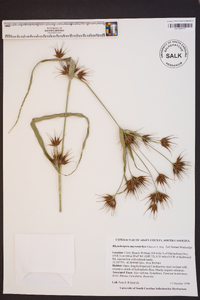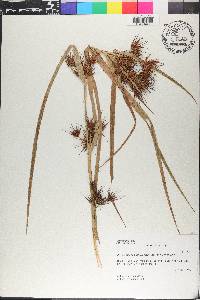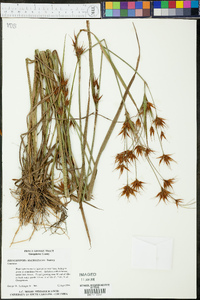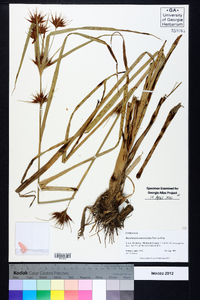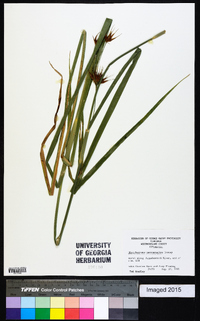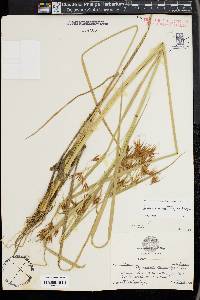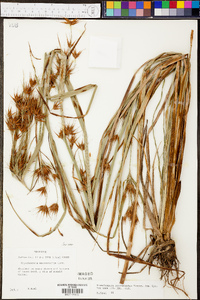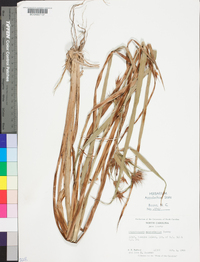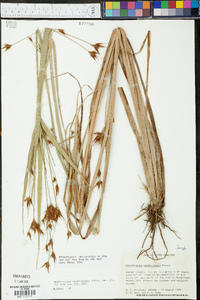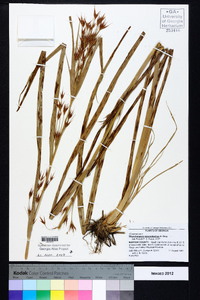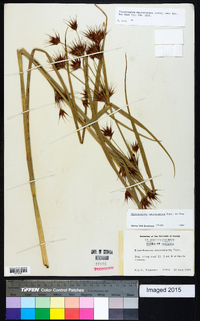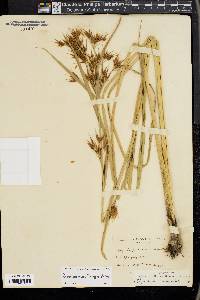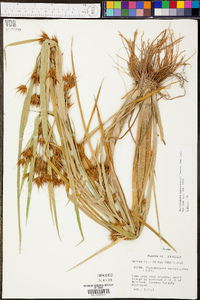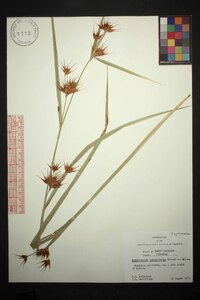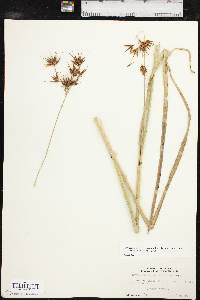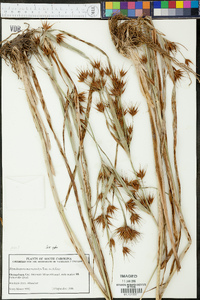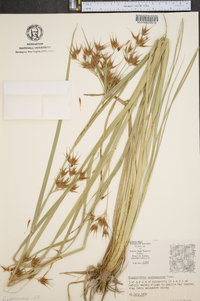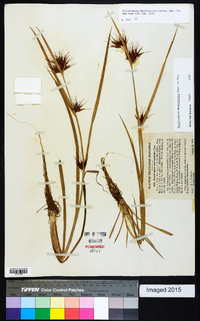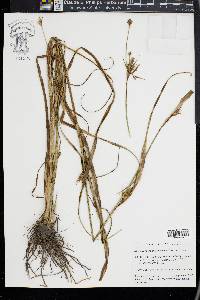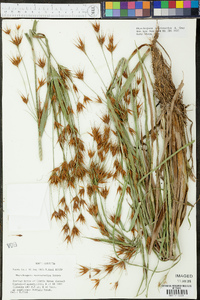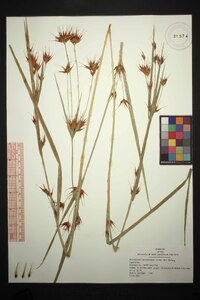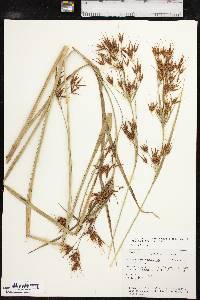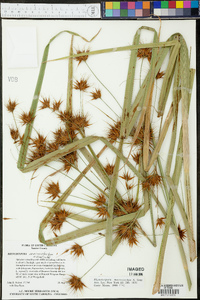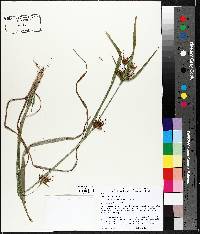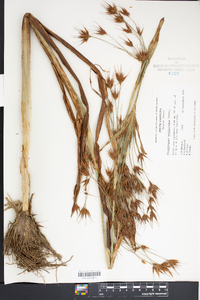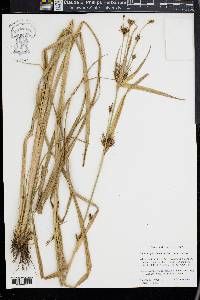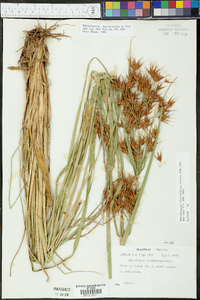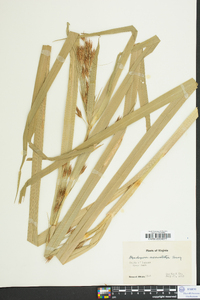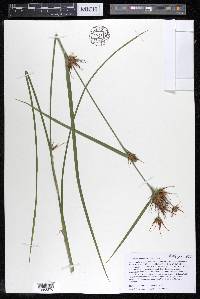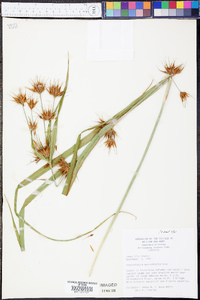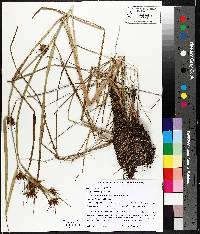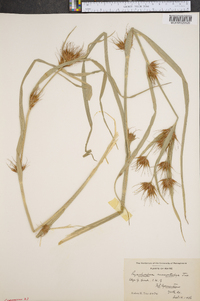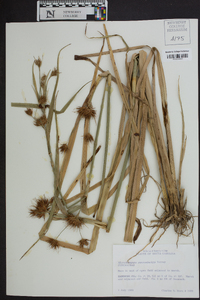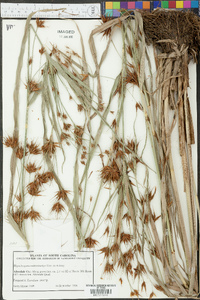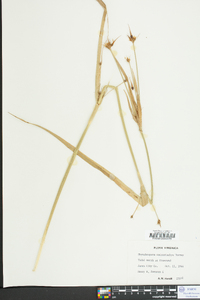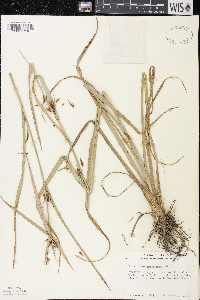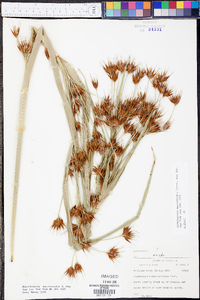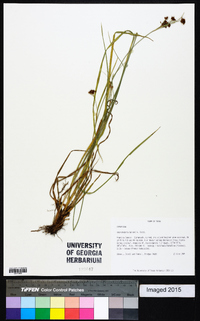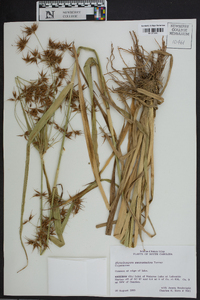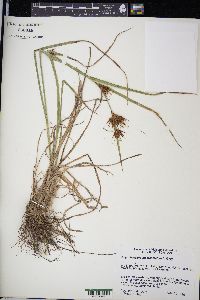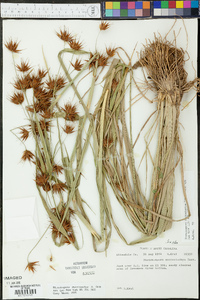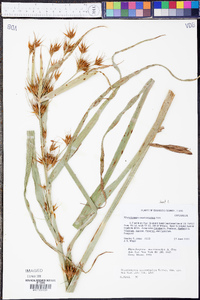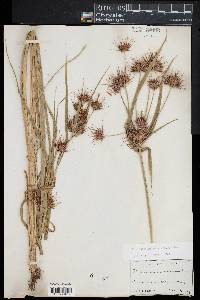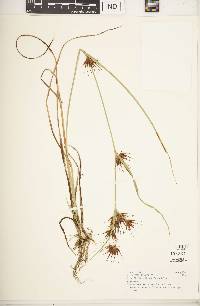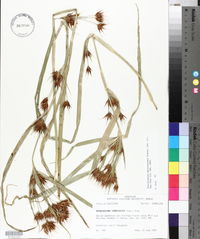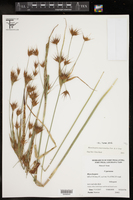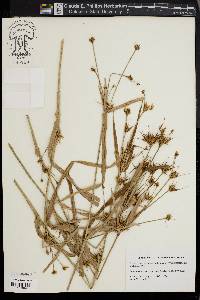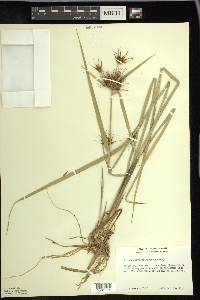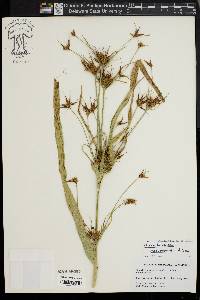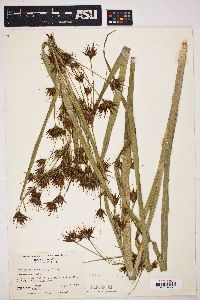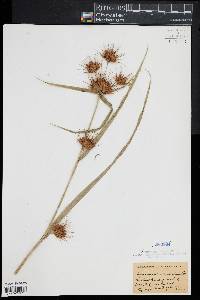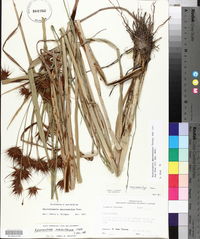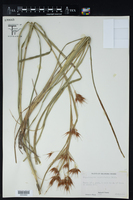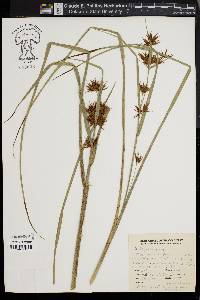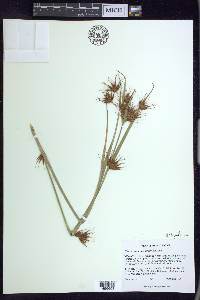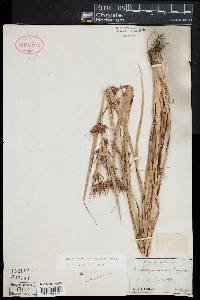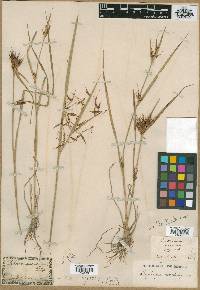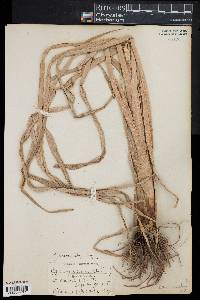Rhynchospora macrostachya
|
|
|
|
Family: Cyperaceae
Tall Horned Beak Sedge, more...tall horned beaksedge
[Ceratoschoenus macrophyllus Tuck., moreRhynchospora corniculata var. macrostachya (Torr. ex A.Gray) Britton] |
Plants perennial, cespitose, 80-150(-170) cm, coarse; rhizomes absent. Culms stiffly erect, leafy, triangular, multiribbed. Leaves ascending, overtopped by inflorescence; blades flat proximally, 3-10(-15) mm wide, apex attenuate, trigonous. Inflorescences terminal and axillary, narrow, clusters of corymbs, clusters dense, mostly broadly turbinate, 13-15 mm; bracteal leaves mostly exceeding subtended compounds. Spikelets brown, lanceoloid, 13-15 mm, apex acuminate; fertile scales lanceolate, 10-13 mm, apex acuminate, midrib short excurrent. Flowers: longer perianth bristles usually fully 2 times length of fruit body, antrorsely barbellate. Fruits 1-2 per spikelet, 20-25 mm; body pyriform obovoid, compressed, 5-6 × 2.6-3.6 mm; tubercle attenuate, 2-grooved, (15-)18-20(-21) mm. 2n = 18. Fruiting summer-fall. Acidic sunny wetlands, mostly pond shores, seeps, bogs, marshlands; 0-400 m; Ala., Ark., Conn., Del., D.C., Fla., Ga., Ind., Kans., Ky., La., Maine, Md., Mass., Mich., Mo., N.J., N.Y., N.C., Okla., R.I., S.C., Tenn., Tex., Va. Rhynchospora macrostachya is quickly distinguished from other species of its complex by more compact clusters, arranged on successive mid and distal nodes to present a narrow inflorescence outline. Its perianth bristles and fruit tubercles are the longest in the complex, probably in the entire genus.
Perennial herb, tufted 0.8 - 2 m tall Leaves: alternate, ascending, 3 mm - 1.5 cm wide, overtopped by the inflorescence, flat basally, linear with a tapering and three-sided tip, parallel-veined, with a sheathing base that encloses the stem. Sheaths opening at the top. Inflorescence: consisting of dense spikelet clusters, terminal and axillary, subtended by leaf-like bracts. Bracts mostly surpassing clusters. Spikelet clusters about 1.5 cm wide, widely reverse cone-shaped, consisting of ten to thirty widely spreading spikelets. Flowers: minute, subtended by a floral scale, lacking sepals and petals, bearing six bristles. Bristles about 1 cm long and more or less equal. Stamens exserted. Anthers 3.5 - 4 mm long. Pistil one. Style two-cleft. Fruit: a one-seeded achene, one or two per spikelet, brown, 4.5 - 6 mm long (not including tubercle), 2.5 - 3.5 mm wide, pear-shaped to reverse egg-shaped, flat, biconvex. Tubercle 1.5 - 2 cm long, two-grooved, forming a beak. Culm: upright, stiff, 0.8 - 2 m long, three-sided, ribbed, solid, leafy. Spikelets: brown, 1.5 - 2 cm long, lance-shaped with a pointed apex. Floral scales spirally arranged and overlapping, to almost 1.5 cm long, lance-shaped with a pointed apex, midrib slightly extending beyond the tip. Similar species: No information at this time. Flowering: mid-July to late August Habitat and ecology: Wet sand and soil. Occurence in the Chicago region: native Etymology: Rhynchospora comes from the Greek words rhynchus, meaning beak, and spora, meaning seed, referring to the beaked achene. Macrostachya means large-spiked. Author: The Morton Arboretum Coarse, erect, annual or short-lived perennial (0.5)1-2 m, with few or solitary, triquetrous stems, lacking rhizomes; main lvs 1 cm wide; infl of a terminal glomerule, a few erect secondary peduncles terminated by glomerules, and often also tertiary peduncles and glomerules; spikelets mostly 10-30 in each glomerule, widely spreading, 15-23 mm; lower scales empty; a few of the upper larger and each subtending a fl; bristles normally 6, 3 on each side, 10-13 mm, subequal; anthers 3.5-4 mm; achenes flat, brown, obovate, 4.5-5.5 mm, the tubercle forming a beak 16-22 mm. Swamps near the coast from e. Mass. to Fla. and Tex., and n. in the interior to Mo. and s. Mich. Gleason, Henry A. & Cronquist, Arthur J. 1991. Manual of vascular plants of northeastern United States and adjacent Canada. lxxv + 910 pp. ©The New York Botanical Garden. All rights reserved. Used by permission. From Flora of Indiana (1940) by Charles C. Deam Very local in a few counties of the lake area on the sedge borders of lakes and sloughs. …… Indiana Coefficient of Conservatism: C = 10 Wetland Indicator Status: OBL |

